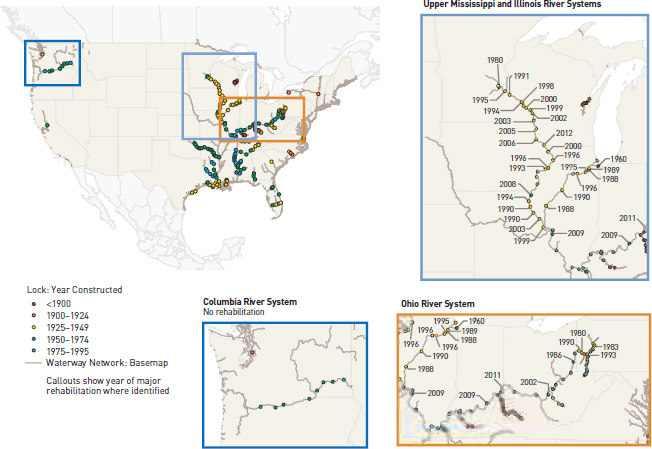
TRB Special Report 315: Funding and Managing the U.S. Inland Waterways System: What Policy Makers Need to Know explores the role and importance of the federally funded inland waterways system, priorities for future investment, its beneficiaries, and sources of funding.
In recent years, the inland waterways system has transported six to seven percent of all domestic ton-miles of cargo. The system is a small but important component of the national freight system, particularly for bulk commodities. The study committee finds that, in order to ensure efficient use of limited navigation resources, the most critical need for the inland waterways system is a sustainable and well-executed plan for maintaining system reliability and performance. Reliability and performance will depend on placing higher priority on investments in operations and maintenance (O&M). Without a funding strategy that prioritizes system preservation, maintenance may continue to be deferred, which would result in further deterioration and in a less cost effective and less reliable system.
The committee finds that more reliance on a “user-pays” funding strategy for the commercial navigation system is feasible, would generate new revenues for maintenance, and would promote economic efficiency.
The committee suggests that an asset management program focused on economic efficiency, fully implemented and linked to the budgeting process, would help prioritize maintenance spending and ascertain the funding levels required for reliable freight service.
View the TRB Special Report 315 webcast.
View the press release.
READ FREE ONLINE
![]()


